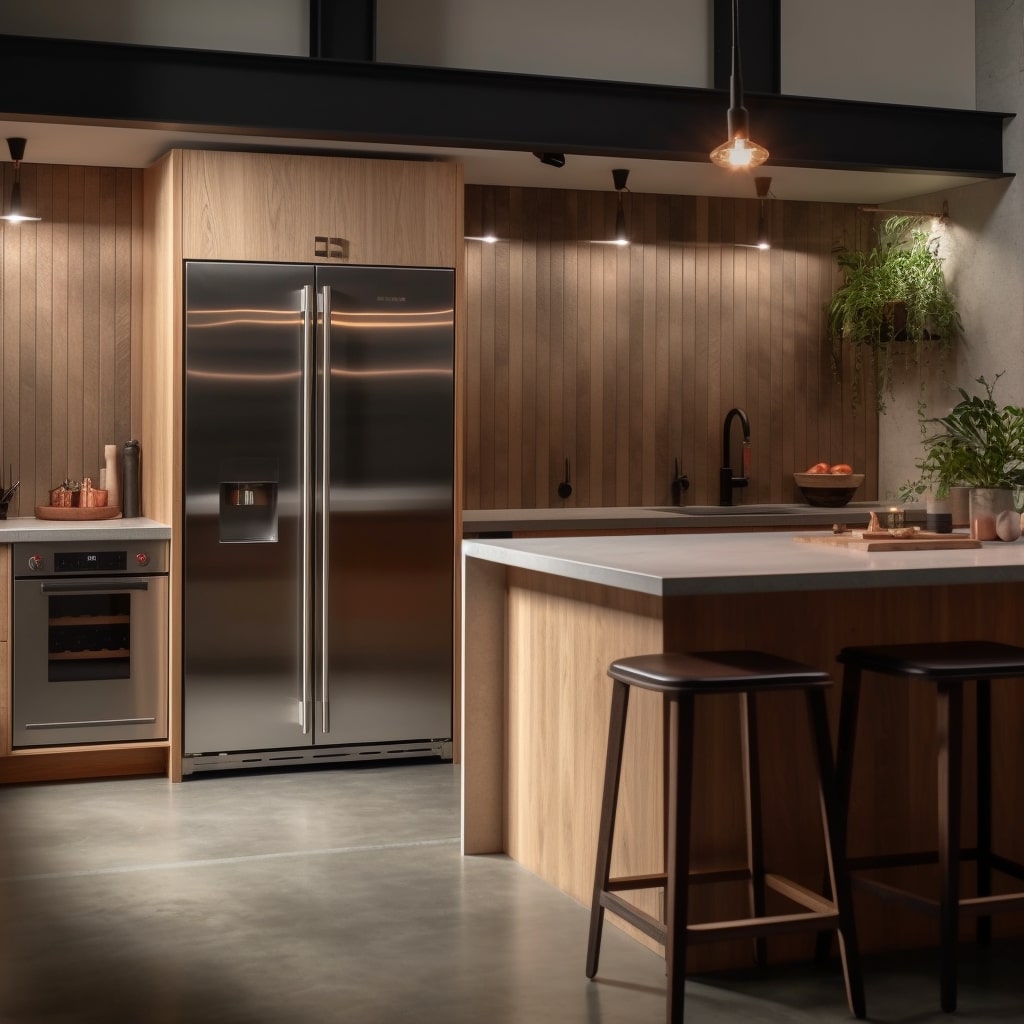Dining out with picky eaters can be a challenging experience for many individuals. It can be difficult to find dishes that cater to everyone’s preferences and dietary restrictions, which may result in feelings of frustration and disappointment during the dining experience.
As a registered dietitian/nutritionist, I have encountered numerous clients who struggle with this issue and often seek guidance on how to navigate such situations.
Fortunately, several tips can help make dining out with picky eaters more enjoyable and stress-free. These include researching restaurants ahead of time, communicating your needs clearly to servers or chefs, being open-minded about trying new foods, and making adjustments to menu items when possible.
By implementing these strategies, it is possible to enjoy a delicious meal while accommodating the various preferences of all diners involved.
Researching Restaurants Ahead Of Time
When dining out with picky eaters, it is important to research restaurants ahead of time. This can help ensure that the restaurant offers menu customization and allergy-friendly options for those who have dietary restrictions or preferences.
To begin your search, consider using online resources such as Yelp or Google Reviews to read about other diners’ experiences at various restaurants in your area.
Once you have narrowed down your choices, take a closer look at each restaurant’s website. Many establishments now offer detailed menus online, which can help determine whether they will be able to accommodate any special requests. Look for dishes that can easily be modified or customized according to individual tastes and needs.
Additionally, pay attention to any allergy warnings or disclaimers on the menu – this may indicate that the restaurant takes extra precautions when preparing food for customers with allergies.
Finally, don’t hesitate to reach out to the restaurant directly if you have any specific questions or concerns about their menu offerings. A quick phone call or email can provide valuable insight into how accommodating a particular establishment may be towards picky eaters or those with dietary restrictions.
By taking these steps ahead of time, you can help ensure a stress-free dining experience for everyone involved.
Communicating Your Needs Clearly To Servers Or Chefs
Effective communication is essential when dining out with picky eaters. Before arriving at the restaurant, it’s important to communicate your dietary restrictions and preferences clearly to the server or chef. This will help them understand what you can and cannot consume, allowing for more accommodating meal options.
When communicating with the server or chef, it’s crucial to remain polite yet firm in expressing your needs. Use specific language to describe your dietary requirements and avoid making assumptions about ingredients or preparation methods. Additionally, be sure to ask questions about menu items that may not be clear on their ingredients or how they are prepared.
Compromising solutions can often be reached through effective communication with servers or chefs. If there are limited options available for a particular diet restriction, consider asking if modifications can be made to existing dishes. Alternatively, some restaurants may allow customers to bring in outside food or beverages that comply with their dietary needs.
Tips for Effective Communication:
- Research the restaurant beforehand and review menus online.
- Politely inform the server or chef of any restrictions before ordering.
- Ask detailed questions regarding ingredients and preparation methods.
Compromising Solutions:
- Request modifications to dishes that fit within your dietary limits.
- Consider bringing outside food or beverages if allowed by restaurant policy.
- Be open-minded toward trying new foods within your dietary constraints.
In summary, effective communication is key when dining out with picky eaters as it allows for a clearer understanding between servers/chefs and diners. By remaining polite but assertive in conveying dietary needs, compromising solutions can often be achieved through menu modifications or alternative meal options. Utilizing these tips can lead to an enjoyable dining experience for all parties involved.
Being Open-Minded About Trying New Foods
According to a recent survey, approximately 20 percent of adults are picky eaters. Food challenges arise when dining out with individuals who have particular tastes and preferences.
Being open-minded about trying new foods is an advantageous trait that can help find common ground while eating out. Culinary experiments can be exciting for picky eaters and non-picky eaters alike.
Trying new dishes or cuisines may expose diners to flavors they never knew existed before. Encouraging your picky eater to try even just one bite of something new can broaden their food horizons and potentially lead them to discover a newfound love for certain ingredients or meals.
It’s important to remember that everyone has different taste preferences, so it’s reasonable not to enjoy every dish you try. However, being open-minded about trying new foods increases the likelihood of discovering healthier options and nutrient-rich meals.
When dining out with picky eaters, it’s essential to approach mealtime with a sense of adventure and curiosity rather than fear or skepticism.
Making Adjustments To Menu Items When Possible
Being open-minded about trying new foods is an important mindset to have when dining out with picky eaters, but sometimes even the most adventurous diners may not find anything on the menu that suits their tastes.
In these cases, it can be helpful to make adjustments to menu items when possible to create a meal that everyone can enjoy.
One way to customize dishes is by requesting ingredient substitutions. For example, if someone doesn’t like spicy food, they can ask for a milder sauce or for certain spices to be left out of their dish. Similarly, if someone has a food allergy or intolerance, they can ask for alternative ingredients or preparation methods to accommodate their needs. It’s always best to communicate any dietary restrictions or preferences with your server before ordering so that they can help guide you through the menu and ensure that your needs are met.
Another option is to look for restaurants that offer build-your-own options such as salads or bowls. These allow each person to choose their ingredients and toppings, ensuring that everyone gets exactly what they want without having to compromise on taste or texture. When selecting these customizable meals, remember to incorporate all food groups – protein, carbohydrates, fats – in appropriate portions and balance them according to personal requirements.
In summary, making adjustments to menu items when dining out with picky eaters can help turn a potentially frustrating experience into an enjoyable one. By being proactive about communicating dietary preferences and looking for customizable options on the menu, everyone at the table can find something they love while also maintaining balanced nutrition throughout the meal.
Considering Shared Plates Or Tapas-Style Dining
According to a survey conducted by OpenTable, 49% of respondents said they enjoy sharing small plates or tapas-style dishes when dining out. This trend has become increasingly popular in recent years as it allows diners to try a variety of different foods without committing to one large entree.
Small plates vs. shared plates can be beneficial for picky eaters because it provides the opportunity to sample new flavors and ingredients without feeling overwhelmed by a full plate of unfamiliar food.
In addition, tapas-style dining often encourages social interaction and conversation amongst diners which can make the experience more enjoyable and less stressful for those who may struggle with trying new things.
Advantages of tapas-style dining include portion control, allowing diners to indulge in multiple dishes without overeating, and typically a lower cost per dish than traditional entrees.
Small plates also allow for flexibility in order – if someone does not like a particular dish, they are not stuck with an entire entree that they will not finish.
Overall, considering shared plates or tapas-style dining can be an excellent option for picky eaters looking to broaden their horizons while still enjoying a delicious meal.
Bringing Your Snacks Or Side Dishes
Bringing your own snacks or side dishes can be a useful strategy when dining out with picky eaters. This approach allows for greater control over the type and quality of food consumed, which is especially important for individuals who have specific dietary restrictions or preferences.
Snack alternatives such as fruit, nuts, and seeds are healthy options that can help satisfy hunger while providing essential nutrients.
When bringing your snacks or side dishes, it’s important to consider portion control. While having access to familiar foods may alleviate some anxiety associated with trying new things, it’s crucial not to overindulge in these items.
Encouraging mindful eating practices like savoring flavors and textures can also promote a healthier relationship with food.
Bringing your snacks or side dishes should not replace the experience of dining out altogether but rather serve as an aid in navigating menus and making informed choices about what to order. It’s recommended to communicate any special requests or dietary needs to the server beforehand to ensure the best possible outcome.
By being proactive and planning, dining out with picky eaters can be a stress-free experience for everyone involved.
Exploring Ethnic Cuisines For More Options
Bringing your own snacks or side dishes can be a helpful option when dining out with picky eaters. However, it is also worth considering exploring ethnic cuisines for more options. This may seem like an unusual suggestion, but it can provide a variety of choices that cater to different diets and preferences.
Ethnic restaurants often have unique ingredients and cooking methods that are not commonly found in Western cuisine. For instance, Middle Eastern cuisine typically features vegetarian options such as hummus, falafel, and tabbouleh salad. Similarly, Indian cuisine has many vegetarian curries made with lentils, chickpeas, or paneer (a type of cheese). These dishes offer a great alternative for those who cannot consume meat due to allergies or dietary restrictions.
In addition to the above-mentioned benefits of trying new foods at ethnic restaurants, here are some other advantages:
- Many ethnic cuisines use fresh herbs and spices instead of salt to add flavor.
- Some cultures prioritize plant-based meals which could help balance nutrient intake.
- Authentic ethnic dishes tend to be prepared from scratch using whole-food ingredients rather than relying on processed food items.
- The portion sizes in most international eateries are smaller compared to American servings.
- Dining at an ethnic restaurant can be educational by learning about the culture’s culinary traditions.
Overall, exploring more diverse menu options through ethnic cuisine provides an opportunity for both adventurous eaters and picky ones alike. With plenty of vegetarian options available across various cultures’ traditional dishes along with accommodating food allergies; this way of eating introduces people to exciting flavors while ensuring they obtain their necessary nutrients.
Encouraging Picky Eaters To Try New Foods Gradually
Gradual Exposure is a technique used to encourage picky eaters to try new foods. This method involves introducing small amounts of the new food over time, allowing them to become more familiar with it and eventually accept it as part of their regular diet.
Gradual exposure can be done by adding the new food in small quantities to dishes they already enjoy or serving it as a side dish.
Taste Testing Activities are another effective way to introduce new foods gradually. By using taste-testing activities, one can promote an environment that encourages exploration and experimentation without pressure.
These activities involve offering small tastes of different foods and encouraging children to describe what they like and dislike about each taste. Taste testing also allows for creativity in how you present the food; cut fruits and vegetables into fun shapes or create dips and sauces for dipping.
It’s important not to force your child into trying anything new but rather make it a positive experience. Celebrate any progress made towards trying something new even if they don’t end up liking it right away.
Gradually increasing exposure through taste-testing activities will help move picky eaters out of their comfort zones while making mealtime less stressful for both parents and children alike.
Conclusion
When dining out with picky eaters, it can be challenging to find a restaurant that satisfies everyone. However, several tips can make the experience more enjoyable and accommodating for all parties involved.
Firstly, researching restaurants ahead of time allows you to view menus online and determine if they have options suitable for picky eaters.
Secondly, communicating your needs clearly to servers or chefs ensures that any dietary restrictions or preferences are taken into consideration during meal preparation. Additionally, being open-minded about trying new foods may lead to discovering new favorite dishes.
Another helpful tip is making adjustments to menu items when possible, such as substituting ingredients or requesting sauces on the side. Shared plates or tapas-style dining also provide flexibility in selecting multiple smaller dishes that cater to different tastes.
It’s important to note that bringing your own snacks or side dishes is an option as well. Exploring ethnic cuisines offers even more variety and potential for finding something enjoyable for everyone at the table.
Lastly, encouraging picky eaters to try new foods gradually may lead to expanded palates over time.
According to a recent survey by OpenTable, 32% of diners feel anxious about eating unfamiliar cuisine while dining out. By implementing these tips and strategies, individuals can alleviate some of this anxiety and enjoy dining out with picky eaters without compromising their culinary preferences or dietary needs. As registered dietitians/nutritionists, we understand the importance of enjoying meals together as a social activity while still prioritizing individual nutrition goals and preferences.







